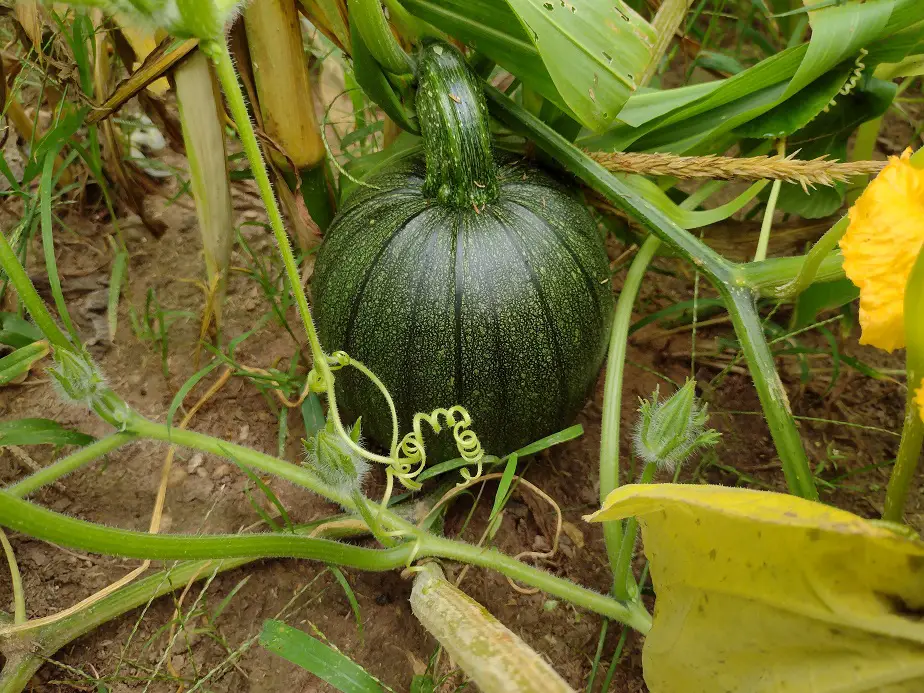I asked over a hundred small-acreage farmers for their best advice. We came up with a list of starter crops, and some basic starting tips to get you going. Be sure to read through it all.
Raddish
Raddish is productive, seeds well, and sprouts easily. In many areas, they sell very well at farmer’s markets. It’s usually the first crop to be ready in the spring. Raddish seedlings are frost tolerant and love the cold wet, spring weather.
The three main types of radishes are daikon (white oblong, takes a little longer to grow), french (small oblong, red to pink, often with white tips, grows fast), and globe (round, pink to red, grows fastest). All radishes grow fast. in good weather, most varieties are ready about four or five weeks after planting
The key with radishes is to have loose soil, not much fertilizer, and to plant them on a staggard schedule. Radish patches can be harvested for 1 to 3 weeks, depending on the weather. Warm weather causes them to become tough sooner.
Radishes will not do well when day temperatures are above 85 and night temperatures are above 75 degrees. In some areas, radishes are devastated by cabbage root maggot. That’s the case here. I have to grow them under row covers or in a tightly sealed greenhouse.
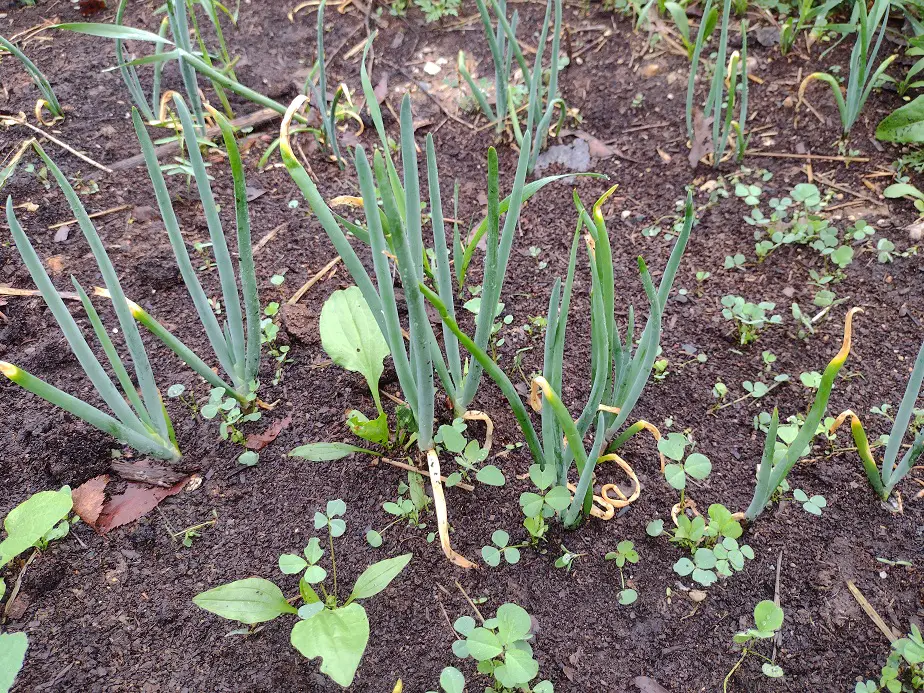
Scallions
Scallions are the second crop I can get to market in the spring. Scallions are small or immature onions with bulbs the size of a quarter or a bit larger. They are basically an older version of green onions. In some areas, they are called spring onions. They are usually planted the fall before, or early spring in warmer areas.
Scallions are tolerant of spring frosts and freezes. I grow a variety called Egyptian Walking Onion. It’s a multiplying onion, meaning the bulbs clove apart into several new ones in the fall. As long as I space them out, they grow some very nice and early scallions in the spring. I just have to leave some of them in the soil to re-grow. Some seed catalogs sell varieties exclusively as scallions.
Spinach
Spinach can be quite the money maker at farmers’ markets. It’s the earliest of the greens, and grows best in cool weather. Spinach grows best between 40 and 65 degrees. It won’t germinate well above 63 degrees. At cooler temperatures, it takes a long time to germinate but germinates well.
Spinach is very fussy about temperature. With staggered planting and planting some in a cooler, shadier spot, I harvested spinach for 4 weeks before the weather got too hot. With shade cloth and a hoop house, I could have grown it a little longer, but that’s another investment.
Spinach grows fast and re-grows after cutting leaves. it’s delicate, and while the seedlings can handle a freeze, mature leaves cannot. With any greens, you have to be gentle when rinsing them. Spinach is prone to flea beetle damage, but so are all greens. Especially in the spring when there’s not much native growth.
Leaf Lettuce
Leaf lettuce is just lettuce picked young, before it has a chance to form heads. It loves cool temperatures and can be harvested 3 or 4 times before needing re-planting. Some people cut it more than that, but after every cutting, it grows back less. To harvest, cut the leaves of about 2 inches from the ground.
Harvesting leaf lettuce is super time-consuming, but there are several companies make a compact “green harvester”, or “baby green harvester” (same thing) that actually make it worthwhile. all greens are prone to wilting if not kept cool after harvesting and the best flavor is within 48 hours of harvest.
Lettuce is a cool-weather crop so leaf lettuce is a pretty early harvesting crop. Just so you know, this entire list starts off with fast-growing early-season crops and ends with late-season crops that need to grow through summer.
Sweet Peas
Snap peas are the earlier harvesting cousin of green beans. They are more valuable per basket than beans and as long as they are trellised decently, pick faster than green beans. Both snow pea and sugar pea varieties are early growers. Snap peas are usually picked when the peas first start to bulge in the pod.
Peas like cool days and cold nights. Summer heat causes the plants to mature and stop growing more pods. Picking them regularly is the key to keeping them going. Planting peas behind a taller crop for shade, or under a shade cloth may help you grow some peas in the early summer.

Kale
Kale is a cold-tolerant plant that also does well in summer heat. It’s fairly productive and you can pick from one crop all season long. I started selling my kale in early June, and now in November, It’s still harvestable for sale. Early season kale is more tender. Baby kale, is popular in some areas.
Baby kale is just kale harvested very young before much of a central stalk forms. It’s planted much closer and harvested 4 or so times before it starts to get too mature. Kale doesn’t need a lot of fertilizer and really prefers rich, dark soil. It’s incredibly hardy and will withstand multiple hard freezes.
Garlic
Garlic is said to be perhaps the best crop for beginners. It’s not very hard to grow, and it usually sells very well. Fresh garlic not only goes over well at most markets, but it’s often popular with local, high-end restaurants. Restaurants can be finicky but can be a great sales avenue for small-scale farmers.
One of the more popular varieties is called Music Garlic. Garlic is freeze-hardy, like all allium plants. It’s almost exclusively plated in the fall and harvested the following spring or summer. Here in Michigan, we can squeeze out the first harvest in early June.
Garlic doesn’t have many pest problems. It just needs some cool weather to get started right. Garlic seed is expensive. You separate and plant single cloves. They can go for $15/pound. Selling garlic for seed stock can be a great venture in itself.
Head Lettuce
Head lettuce is easy to grow in cool weather or under shade cloth in warmer weather. It can be a huge money-maker in higher-end areas. Especially if you can keep the heads looking beautiful. The outer leaves are super fragile and break off easily, but add a lot of value at farmer’s markets.
I was able to sell heads of Romaine and Butter lettuce for over twice what the grocery store was charging. People loved the massive size, the beautiful look, and the much sweeter taste of freshly harvested (within 24 hours of the market) lettuce. Head lettuce is a fast-growing spring and fall crop.
When nighttime temperatures warm up much past 60 degrees, and daytime temperatures get to 80, it won’t grow for me anymore.
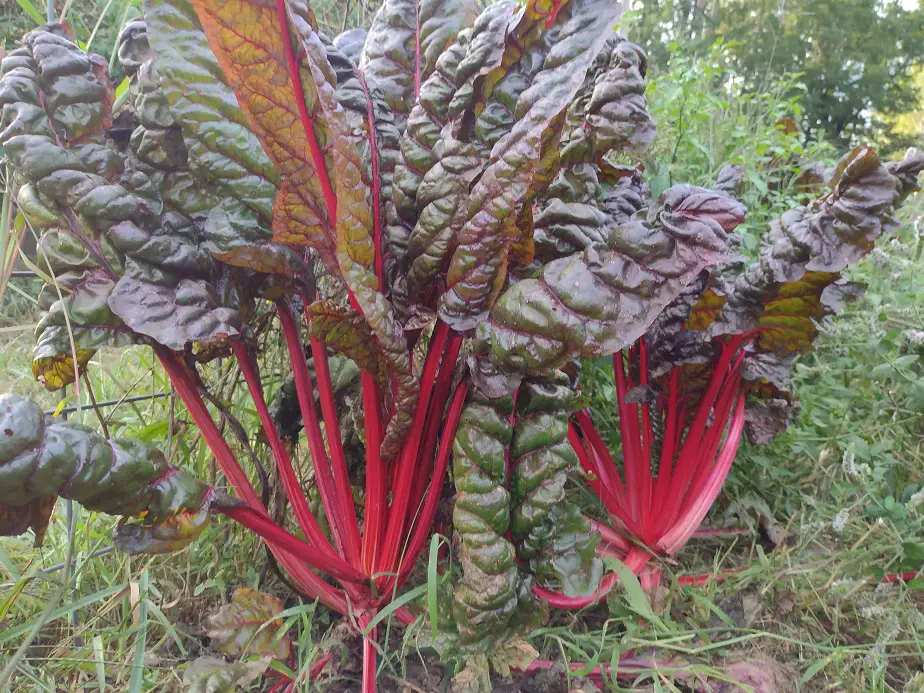
Chard
Chard is a hardy leafy green. White chard is the more popular variety, but pink, red, and yellow colored chard are popular with many chefs and at larger farmer’s markets. It’s easy to grow in Zones 7 through 5 but prefers cool weather (at least cool nights) before it’s established well.
Chard is very hardy and adds a pretty look to my market display. It was not very popular out here in the boondocks, but I did have people drive 15 miles from the city to buy my chard. It’s definitely more of a foodie crop. What a shame really.
Beets
Beets are usually a big seller, not because everyone loves beets, but because beet fanatics love fresh beets. Beets can be grown all season long, but prefer cooler weather. I plant my beets quite thickly using the multi-sow method. Three seeds to a plant cell then transplanted them at about 2 -3 inches tall.
I grow three or 4 beets every 6-8 inches and harvest the larger ones first. I can go through a large patch of beets three or four times, picking only the biggest and beast each time. As it gets thinned out, the smaller ones will continue to grow. Beets can be planted early, while the frost is still around.
They grow fast and vigorously in good soil Beets are moisture sensitive, especially early on. Don’t let the soil dry out at all until the beets are at least golf ball-sized. Planting beets close together shades the bulbs from the summer sun, which helps a lot. Beets need a lot of Nitrogen early on to grow good leaves.
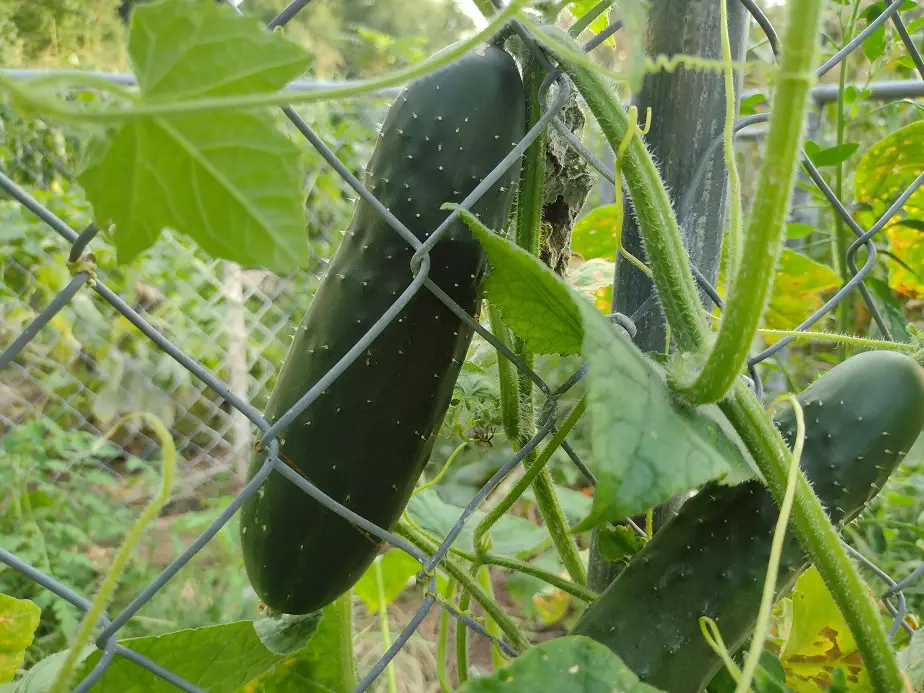
Cucumber
Cucumber is super easy to grow and usually sells well everywhere. They have moderate pest concerns in the seedling and young-growing stages but are usually left alone during most of the summer. Cucumbers are productive and love the summer heat. Just don’t let them dry out.
Cucumbers need a good supply of fertilizer nutrients to remain happy and productive for a long season. Unlike the greens, cucumbers don’t get wilty very fast. They store very well in a cooler for several days, and unlike most greens, don’t need refrigeration during a hot market day.
Green Beans
Green beans are productive and a reliable sellers at every market. If you grow a decent crop, you may be able to sell them easily to local restaurants. Green beans aren’t a high-dollar crop, they always sell cheap. But, they always sell, are easy ti grow, and don’t have many pest concerns.
The only issue with green beans is that you have to pick them on time or they will very quickly get overgrown, tough, and stringy. Green beans love summer heat and don’t need a ton of water. They do have moderate fertilizer needs.
Zucchini
Zucchini is an easy-to-grow, fairly easy-to-sell crop. Common, green zucchini sells the easiest, but if your area has a lot of people growing that, you may consider growing a yellow zucchini, or another summer squash like patty pans or crooknecks.
Zucchini needs to be picked exactly on time. Two days too late means overgrown fruit. In some markets, bigger ones sell better, but usually, the smaller zucchinis sell better. Zucchini needs a lot of water early on, before the plants shade the soil.
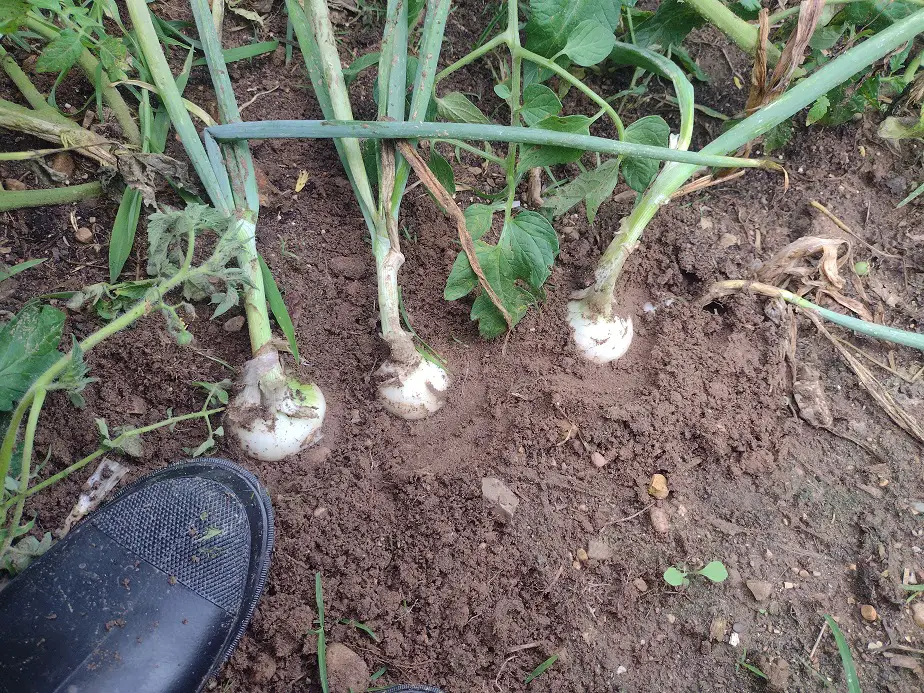
Onions
Mature onions are not usually a big money crop but tend to sell well, especially in rural markets. As long as you get a variety suited to your area, they are fairly easy to grow and have few pest concerns. In northern climates, we need long-day varieties and in the south, you’d need short-day varieties.
I don’t try for giant onions, but prefer the more baseball-sized ones because it’s just easier for me. Either yellow or white onions tend to sell best, but red ones can demand a higher price in some areas. I grow onions because they store so good.
I can harvest one crop mid-summer, then sell it off through the rest of summer and into the winter. After curing and trimming, I just pile them in barrels in my shed for storage.
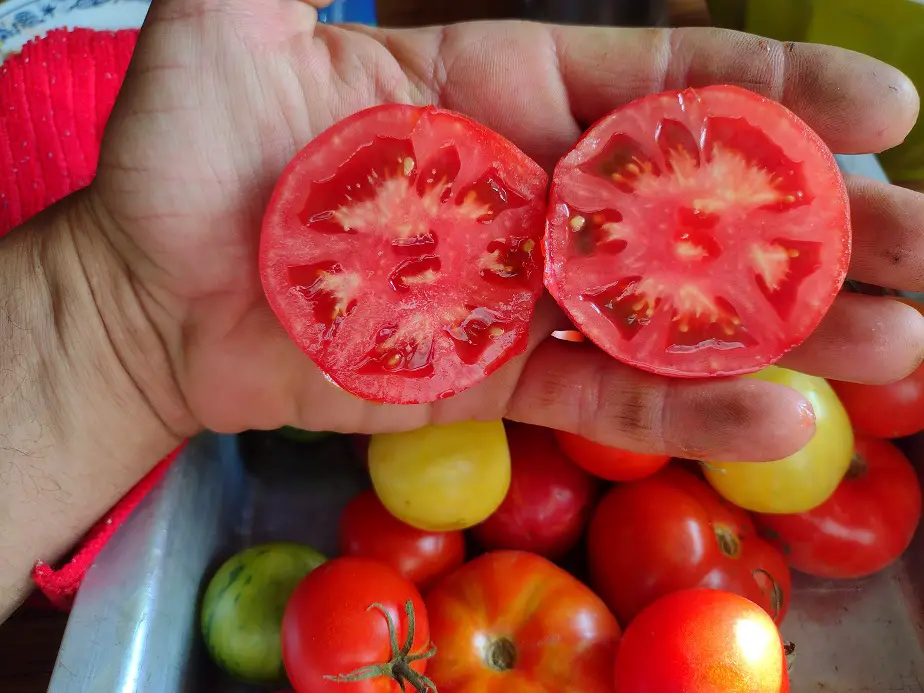
Tomatoes
Tomatoes are a high-dollar, productive, and easy-to-sell crop. They are also fussy to grow. Tomatoes have some pest concerns, but the bigger issue is disease. Septoria Leaf Spot and Common Blight are two fungi that are everywhere and will really hurt crops that aren’t super healthy already. But, they take a while.
Most of the time, it’s Septoria Leaf Spot that hurts or kills off crops. You need to know how to manage the disease and how to grow healthy, comfortable plants so they can keep it at bay. One thing I’ve learned is that heavily fertilized crops are hit harder than moderately fertilized crops.
If you’re wanting to do tomatoes, start with at most a hundred plants until you get the hang of it. Big, smooth red tomatoes are the most reliable seller. Cherry tomatoes can be a good money-maker, but takes more time to pick and pack, and they’re not popular at all farmer’s markets.
Sweet Corn
Sweet corn is a short-window crop that everyone looks forward to. It’s harvested in a 2-45 week span, depending on if you staggered the planting or not. Sweet corn technically stores well, but half of its sugars are lost in the first 24 hours after harvest.
The best crops are picked early morning and sold same-day. Sweet corn needs decent water and a high dose of soil fertilizer nutrients. While it’s not a high-dollar crop compared to some, it’s a low-maintenance crop. Sweet corn needs fertilizer, some water, and weeding a couple times. That’s all
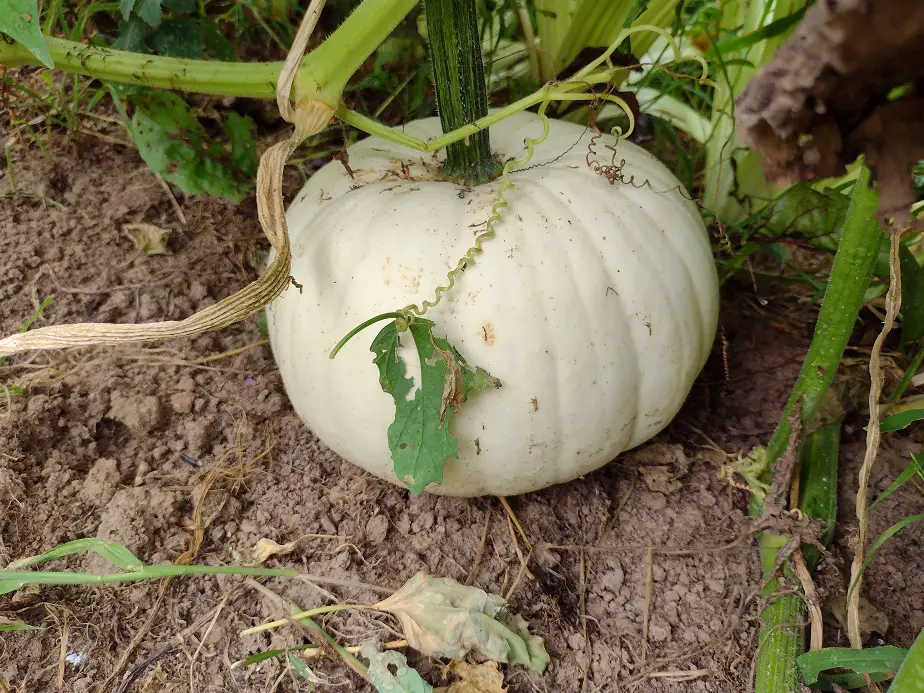
Pumpkin
Pumpkin is another seasonal, low-maintenance crop. The US pumpkin market is basically October and a little in late September, so you have to plan accordingly with the varieties you grow and when you plant. Selling fall pumpkins can bring in $2,000 or more per acre pretty easily, as long as you have a decent market for them.
Pumpkins are a long-season crop, and in areas with long, hot summers, they can have a bad time with squash bugs, aka stinkbugs. The biggest issue with pumpkins is not enough water and too much nitrogen in the soil.
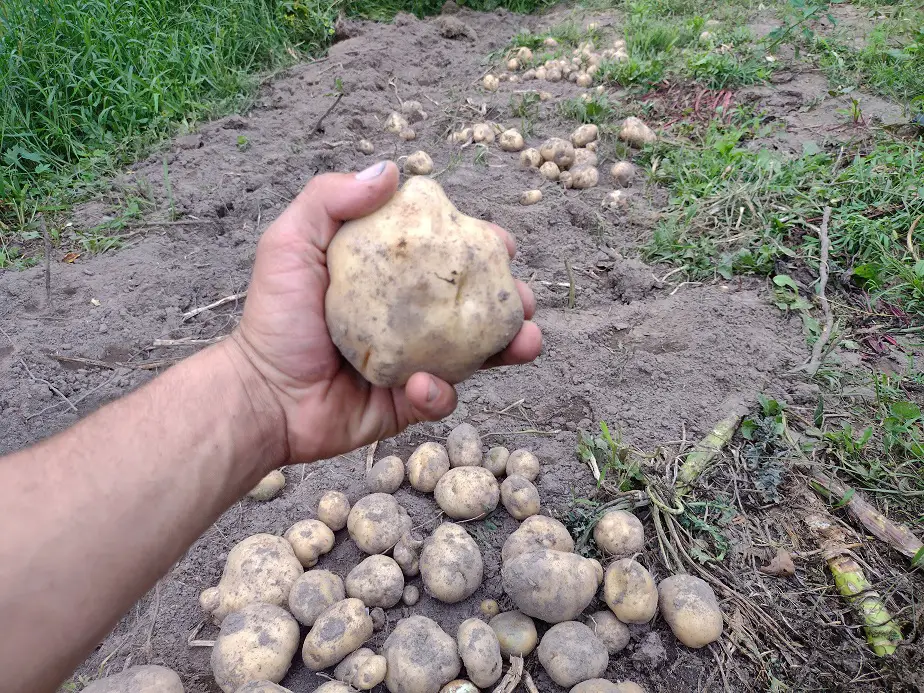
Potato
Potato is my favorite storage crop and we’re planting a lot more next year. Potatoes are considered low-maintenance because the harvest is all at once and they have less weed concerns than some crops. Most varieties take 90 days, plus or minus, to mature in ideal conditions. But, they can be harvested young.
Young potatoes are very popular in many areas and are often sold as fingerling potatoes. New Potatoes, those that haven’t been in long-term storage, can sell for up to twice as much as stored potatoes. I consider new potatoes to be within 2 weeks of harvesting. They taste so much better and sweeter! With standard planting and multiple varieties, you can harvest mature potatoes over a 2-month period.
Carrot
Carrots are a cool-weather crop and can be grown as baby carrots (harvested after 35-45 days) or mature carrots (harvested after 70-85 days). Fresh carrots can sell well at markets. Mature carrots can are often stored in walk-in coolers for months before selling. That way, you can pick them all at once and sell them for a while.
If you want a lot of carrots, as in over 1/4 acre, you should have some sales outlet other than the farmer’s markets. The hardest part of farming is often selling what you grow. Restaurants, school cafeterias, or larger produce buyers are all options. Selling direct-to-customer is always the most dollars per pound by far, but the more commercial outlets deal in higher volumes.
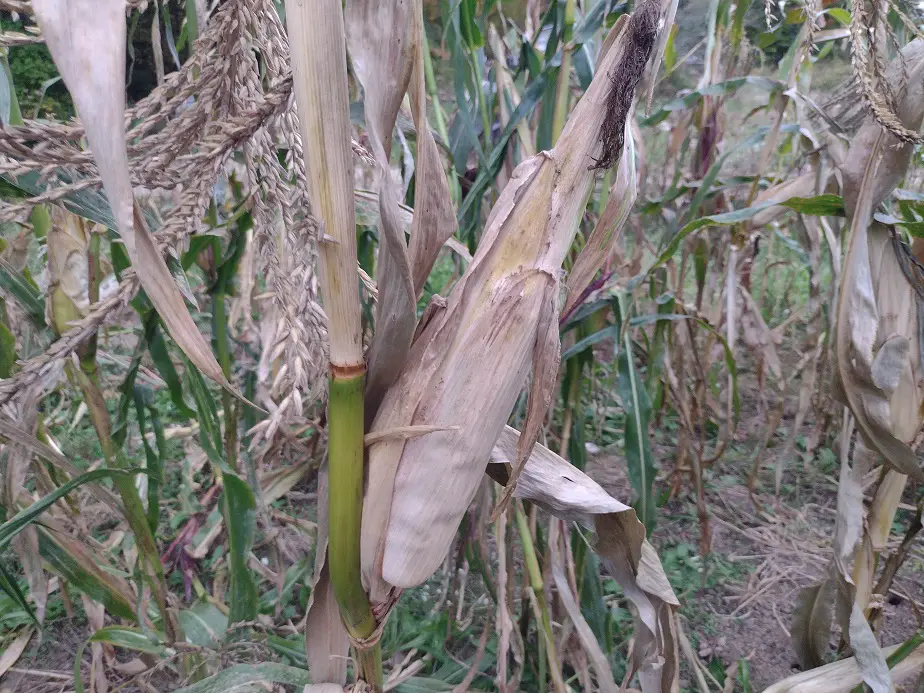
Field Corn
Field corn, sometimes called feed corn, is the staple crop of the US. Every animal feed, even dog and cat food contains corn. Corn, or one of its industrial by-products, is in just about every processed food item you can buy. It’s also a very reliable, low-maintenance crop. Pick a variety that fits your growing season.
It’s relatively easy to sell corn, but it’s fairly hard to sell it for much money. I can bring a wagonload of dry corn to the local grain elevator and they’ll buy it at commodity prices, about $5/bushel. a decent field grows about 150 bushels (52 pounds in a bushel) per acre, plus or minus. That’s $750, not much.
But, grains all have a specialty market, especially heirloom varieties. Ground into cornmeal or cornflour, you have a very nice food product that can sell for $1/pound. That can be a popular farmer’s market product. Dry, whole corn can be stored over winter, then freshly ground the following market season.
It’s also sellable in the specialty animal feed market. People regularly pay $30 to $50 for 50 pounds of non-GMO grain-based animal feed. That’s actually something I’d like to get into down the road. Growing and marketing heirloom corn for high-end chicken and goat feed.
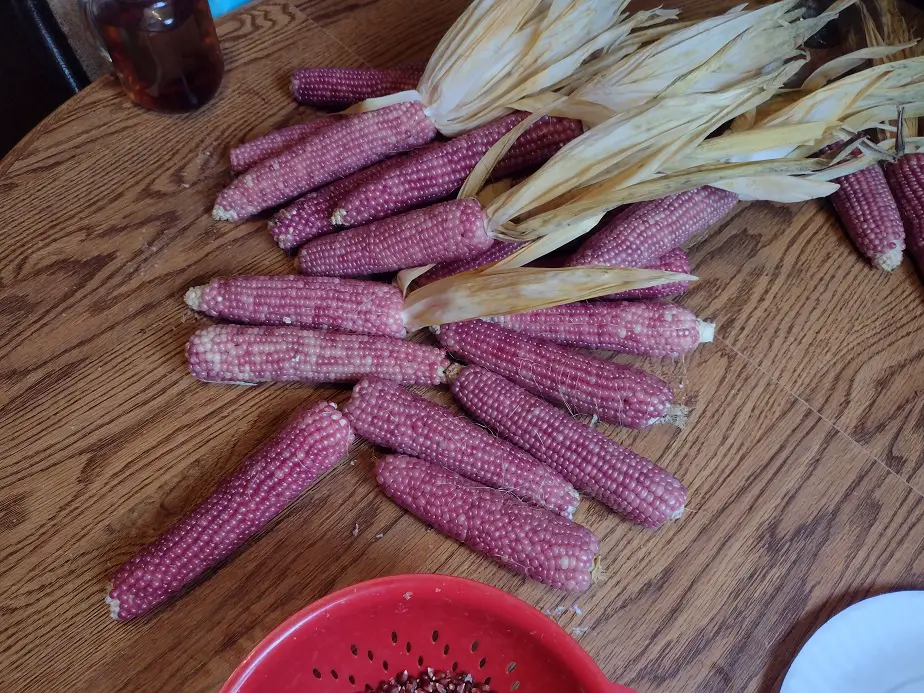
Popcorn
Popcorn grows quite productively, can be stored for 5 years, and has a really good market price. When ground, it’s also a popular grain for specialty chicken and pigeon feed. I grew an heirloom popcorn this year, a variety called Early Pink, and it did well.
Heirloom popcorn has a niche market, but may only work well near larger cities. A lot of people don’t like heirloom popcorn because it’s more grain-tasting and has thicker hulls than hybrid popcorn. Hybrid popcorn is the stuff most people are used to these days. Popcorn takes 80 to 120 days to grow.
Heirloom seeds
Harvesting and selling heirloom garden seeds is much simpler than selling produce at the farmer’s market. You don’t have to pick and wash produce all week, and you don’t have to spend half a day at the market. All you need to know is basic disease control and crop distancing.
If growing several varieties of the same crop, you have to take proper precautions against cross-pollination. With something like tomatoes, that just means keeping them 10-15 feet apart. For insect or wind-pollinated crops like corn or squash, it’s tougher.
You need to either grow just one variety or grow under a cover. You could use a greenhouse, insect netting, or flower bagging to keep the genetic integrity of specific varieties. I have a seed deal in the works with MIgardener for next year. Should be fun.
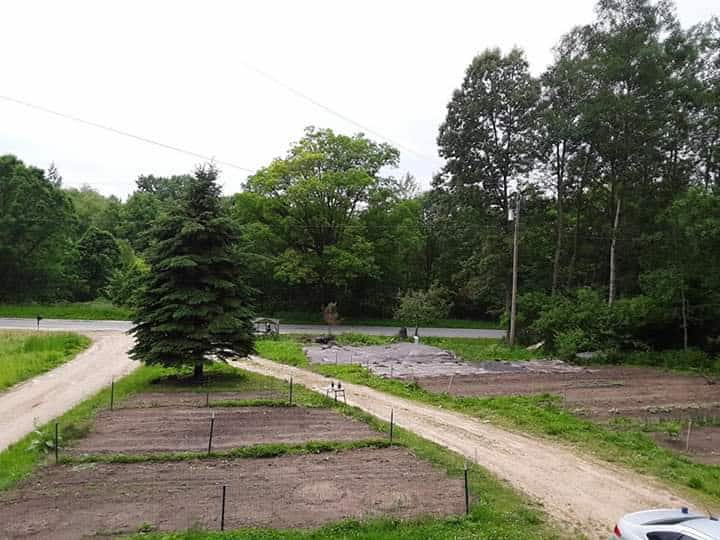
Tips for Farming on 1-Acre
If you are just starting out, well congratulations! I hope many years of success for you. The best advice we have for you is to keep it simple and start cheap. If you don’t know a lot about farming, starting out by spending a ton of money is a sure way to go broke.
Things you will need to grow decent crops of anything are fairly fertile (dark-colored) topsoil, Irrigation or 20+ inches of rain a year (I have both), and at least 8 hours of direct sunlight a day. If you have that, you can farm. It’s easy to build up soil’s natural fertility, just add a lot of organic stuff to the soil every year.
Keep it simple. Assuming the property is where you live, irrigate it with garden hoses and impact sprinklers. Perhaps run a water line to the garden area and install a simple outdoor hydrant so you have enough water pressure to run several sprinklers at once. And remember, it’s only the beginning. You’ll get better.
If your dirt is poor, consider a load of manure to be spread heavily on the area. Local farmers can do that for a simple fee. Learn about cover cropping, and understand that conventional tillage causes soil to lose its natural fertility. As much as possible, leave plant matter to break down in the soil it came from.
Synthetic fertilizer (regular fertilizer) is classified as a salt and overusing it causes organisms like earthworks and beneficial bacteria and fungi to significantly decrease and die off. Regular soil tests are necessary. I recommend a professional test in the beginning, then simple DIY ones in subsequent years to keep an eye on basic fertility.
If you grow three to five different crops, you can stagger the harvest and sales through the spring, summer, and fall. By planting the same crop several weeks apart, you can have a prolonged harvest and sales window. Also, the short-season cool weather crops can be grown in spring and end of summer/fall.
Related articles:

